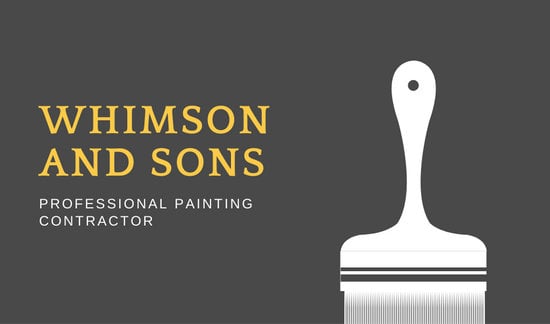Learn More About The Ways In Which Seasonal Elements Can Influence The Success Of Commercial Outside Paint And Establish The Most Effective Times To Accomplish Long-Term Outcomes For Your Task
Learn More About The Ways In Which Seasonal Elements Can Influence The Success Of Commercial Outside Paint And Establish The Most Effective Times To Accomplish Long-Term Outcomes For Your Task
Blog Article
Content By-Doherty Chaney
When you're preparing a commercial outside paint task, seasonal variables can make or break your outcomes. You'll wish to consider exactly how temperature level and humidity influence paint application and drying out times. Choosing the best period can ensure your paint sticks effectively and lasts longer. But which seasons are really the very best for this sort of job? Allow's explore the key elements that can affect your task's success.
The Influence of Temperature Level on Paint Application
When you're intending a business exterior paint job, the temperature can significantly impact how well the paint adheres and dries out.
Preferably, you intend to paint when temperature levels range between 50 ° F and 85 ° F. If it's also cool, the paint might not heal properly, causing issues like peeling off or fracturing.
On the flip side, if it's also hot, the paint can dry out too quickly, avoiding correct bond and leading to an uneven surface.
You must likewise think about the moment of day; early morning or late afternoon offers cooler temperature levels, which can be a lot more beneficial.
Always inspect the maker's recommendations for the particular paint you're utilizing, as they often supply advice on the suitable temperature array for optimum outcomes.
Humidity and Its Result on Drying Times
Temperature level isn't the only environmental aspect that influences your industrial exterior painting project; moisture plays a substantial duty as well. High moisture levels can reduce drying times drastically, impacting the total quality of your paint task.
When the air is filled with dampness, the paint takes longer to treat, which can result in problems like bad attachment and a greater threat of mold growth. If you're painting on a specifically moist day, be planned for extended delay times in between layers.
It's crucial to keep track of regional weather and plan appropriately. Ideally, residential painter for moisture degrees between 40% and 70% for optimal drying out.
Keeping these factors in mind ensures your job remains on track and delivers a long-term surface.
Best Seasons for Commercial Exterior Paint Projects
What's the best time of year for your commercial external painting jobs?
Spring and very early loss are commonly your best bets. During these seasons, temperature levels are moderate, and moisture levels are frequently lower, creating excellent problems for paint application and drying.
Prevent summertime's intense heat, which can create paint to completely dry as well quickly, bring about inadequate adhesion and coating. In a similar way, wintertime's chilly temperatures can impede proper drying and curing, taking the chance of the durability of your paint work.
relevant webpage for days with temperature levels in between 50 ° F and 85 ° F for ideal results. Remember to inspect the local weather prediction for rainfall, as wet conditions can spoil your project.
Planning around these factors ensures your paint project runs smoothly and lasts longer.
Final thought
Finally, planning your commercial outside paint projects around seasonal considerations can make a substantial difference in the end result. By organizing work throughout the perfect temperature levels and humidity levels, you'll ensure much better attachment and drying out times. Keep in mind to watch on neighborhood weather prediction and select the right time of year-- spring and early autumn are your best choices. Taking these actions will aid you attain a resilient and expert finish that lasts.
